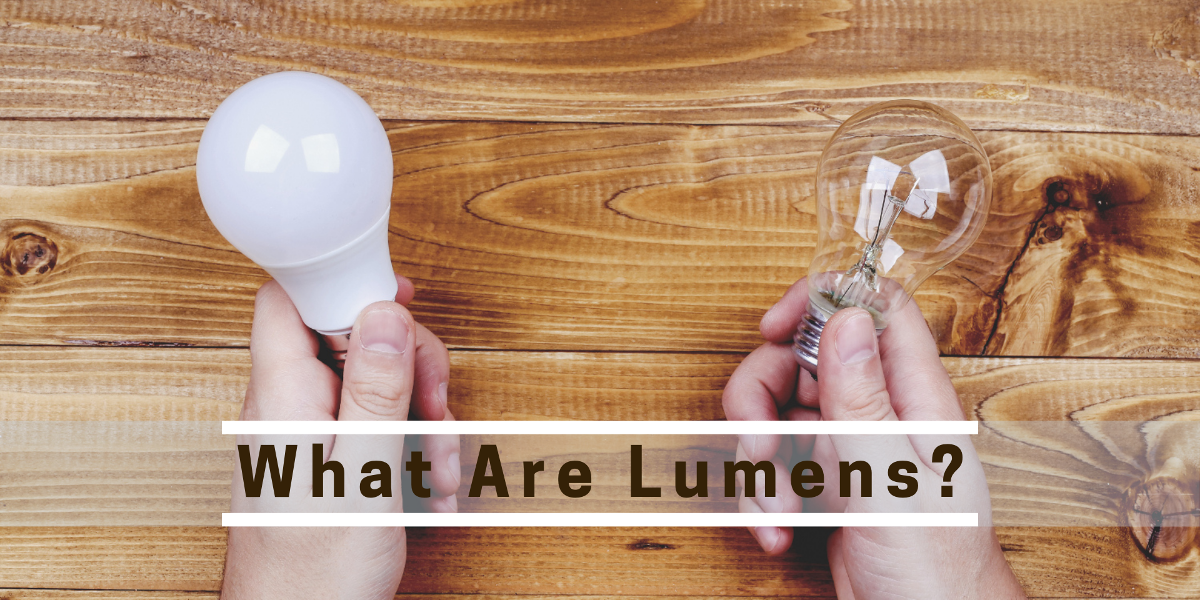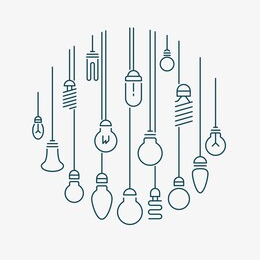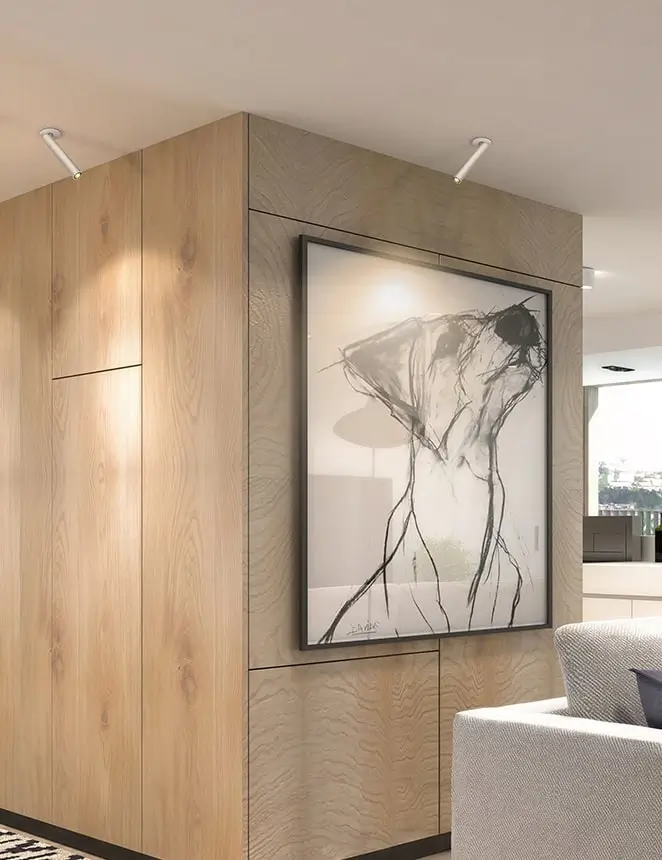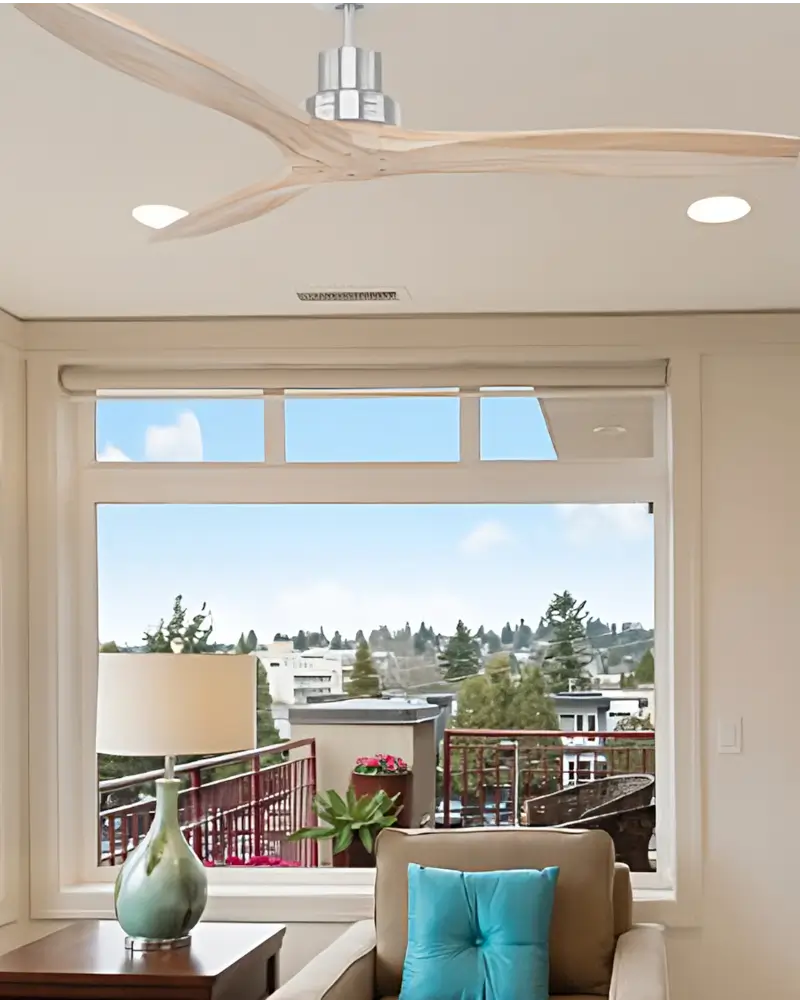Simply put, Lumens are a measurement of light output, more lumens = more light. Lumens (lm) are helpful to determine how bright your light is, Watts (W) are useful to determine how much power the light will consume. If you are replacing old lamps with new LED lamps and you still don’t know how many lumens you need, well, you’ll be glad you found this page, we have a chart below that shows the relative light output of old-style GLS and Halogen lamps so you can make sure your new LED is consistent.
How Many Lumens is a Standard GLS Lamp
| Wattage | Approx Lumens | Efficiency |
| 25W | 250 lm | 10 lm/w |
| 40W | 450 lm | 11 lm/w |
| 60W | 800 lm | 13 lm/w |
| 75W | 1000 lm | 13 lm/w |
| 100W | 1500 lm | 15 lm/w |
| 150W | 2250 lm | 15 lm/w |
| 200W | 2800 lm | 14 lm/w |
How Many Lumens is a Halogen lamp
| Power Input | Approx Lumens |
| 12V 20W | 180-250 lm |
| 12V 35W | 400-550 lm |
| 12V 50W | 550-770 lm |
| 230V 50W | 300-400 lm |
Why we don’t use Watts to determine the light output for LED’s
Whilst it may seem reasonable, as often you can find a correlation between Watts and Lumens with LED lamps, however as technology has progressed light outputs relative to wattage can vary vastly between some brands or generations of lamp. Using Lumens is the best way to make sure the amount of light output is consistent across a space.
We used to have 9 or 10W LEDs with an output of 400 lumens now some 10W LED’s are getting up to 1000 lumens.
In our store we normally look at the lumens first to measure the light output and the wattage second to see how efficient the lamp or fixture is.
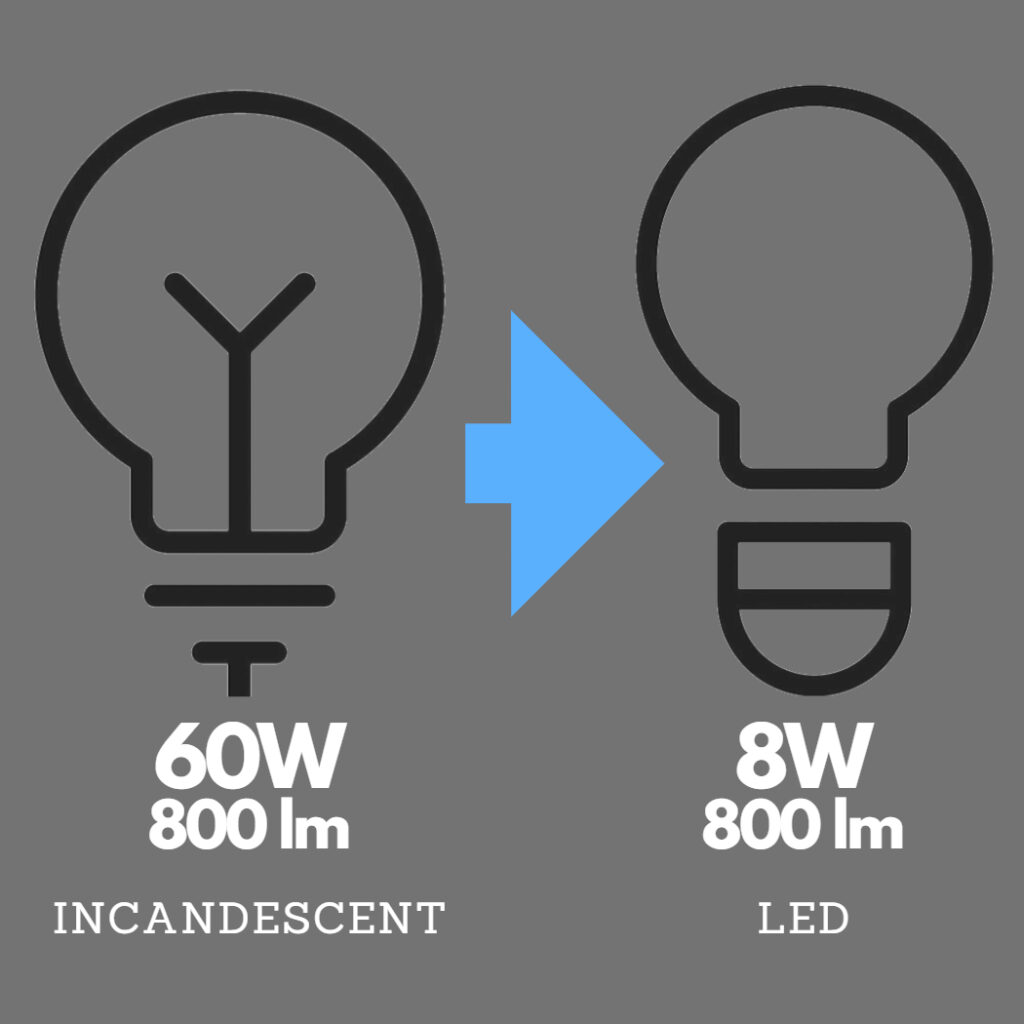
Are more lumens better?
This is tricky to answer because it comes down to the situation, you are trying to find the right level of light for you and the space. If you currently use a 60W lamp (~800 lumens) but you want a brighter light you could try using a 1000 lumen LED lamp in the same fitting. The only issue is that LED lamps have more glare than normal lights.
A 75W 1000 lumen light bulb is fine to have in your vision but a 1000 lumen LED can be quite sharp on the eyes and can cause discomfort. We always recommend swapping like for like unless the light source is hidden inside a light fitting and cant be easily seen.
We often get asked about fittings that are inadequate for the task, for instance, you could have a light fitting with a single bulb lighting your whole dining room space. This really is a situation where finding the highest power LED lamp could let you down, as it won’t light the space nicely and glare will be an issue. It would be best to upgrade to a fitting or fittings that are more adequate for the room.
What about the colour of the light
Colour of light can affect the light output with LED, generally speaking, you will find cooler colours of LED have a higher lumen value, this is because the LED diode inside the LED light is blue in colour, so to create cooler, bluer lights the manufacturer can use fewer phosphors to change the colour of the light.
There is a perception difference too if you use a 1000 lumen 3000k (warm white) LED and swap it to a 1000 lumen 6000k (daylight) LED you will perceive the second lamp is brighter. It’s not generating more light but your eye feels it is a better working light.
Colour of light is determined by the Kelvin (K) of the lamp, here is a quick chart to sum up the colours but lower numbers are warmer and higher numbers are cooler. This is a very general guide for what spaces to use these lamps in, feel free to break these rules.
| Colour Temperature | Colour | Space used |
| 1800k | Ultra Warm | Decorative Lamps |
| 2700k | Extra Warm White | Bedrooms, Living Spaces |
| 3000k | Warm White | Bedrooms, Living Spaces, Bathrooms, Kitchens |
| 4000k | Cool White | Kitchens, Bathrooms, Office, Garage or Retail |
| 5000k – 6000k | Daylight | Commercial, Retail or Office |
Warmer colours are generally better for your home, they are more relaxing and help you feel more comfortable. But if you have a working space like an Office or a Garage you should look at cooler colours to make you feel more awake and ready to work in these spaces.
You will note that some room recommendations are shared across colour temperatures – this is because your own perceptions and preferences are paramount.
All LED fittings will have the colour temperature on the packaging, make sure you check this so you have the right colour for the space you are lighting.
How much more efficient are LED lamps
LED’s are many times more efficient than traditional lamps, a 100W lamp puts out roughly 1500 lumens but we have found 15W lamps that can put out that same amount of light that is 85% or higher energy saving.
If you are interested in how to work out the efficiency of your LED lamps take the number of lumens and divide that by the power consumed (watts) and you will have the lumens per watt (lm/w). With some newer technologies we are getting around 100 lm/w and this number will only get higher in the future.

Life expectancy
Bulbs have an hour rating – an Average Rated Life (commonly referred to as life expectancy). This indicates how long a product is rated to last before a percentage (typically 50%) have failed.
For example, of 100 bulbs with a 15,000-hour rating being tested, it would be expected at 15,000 hours 50 bulbs would have failed, with 50 still operating.
A common misconception is that the hour rating on the box is some form of guarantee the bulb will last that long, it simply serves as an indicator of expectations but can be particularly useful for comparison between products.
It should be noted there can be a tradeoff with high efficiency LED lamps and life expectancy. Some manufacturers focus on high lm/w values and trade-off longevity for this, often more prevalent on cheaper ranges. A crass rule of thumb is that you can only select two properties out of high efficiency, high rated life & low cost.
It is important to match all the criteria of product to the application, eg, easy to service fixtures (on a low ceiling stud height for example) may suit an efficient, inexpensive light source, conversely with hard to reach or impractical to service fixtures (a stairwell for example) the priority should be placed on rated life.
